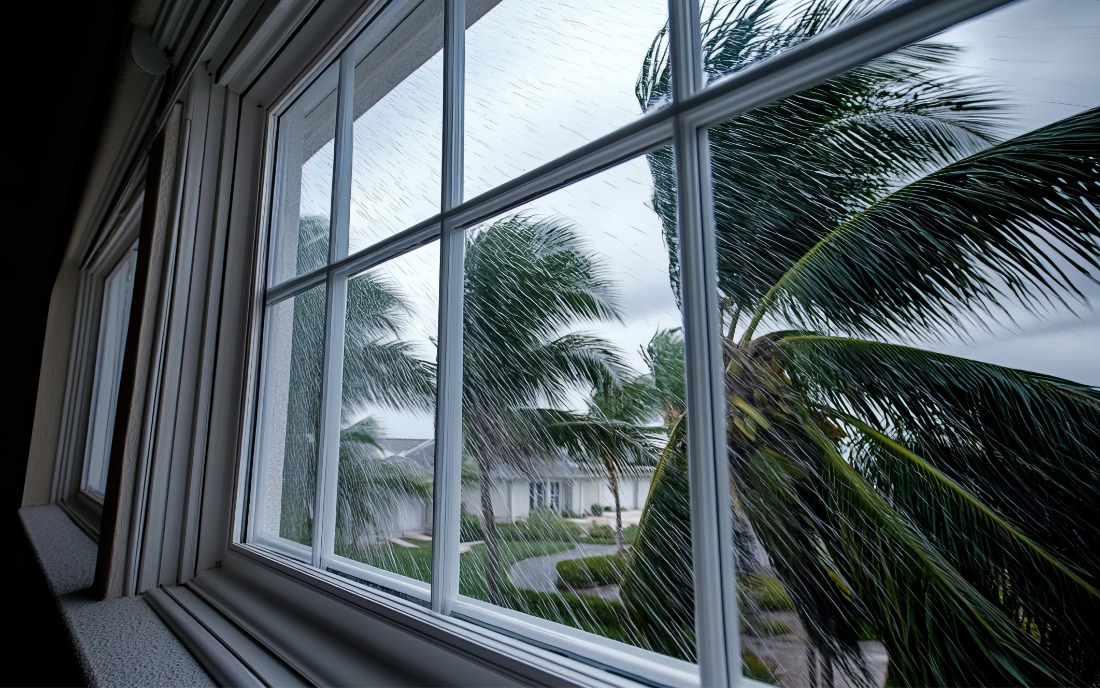Window Styles: Casement, Single-Hung, and Double-Hung

Upgrading your windows is one of the smartest investments in your Florida home. But before you choose a product, it’s important to understand how different window styles perform in your environment. From energy efficiency to airflow and ease of use, the style you select can have a long-term impact on comfort, appearance, and utility costs.
This guide compares three of the most common window styles: casement, single-hung, and double-hung. Each option has its strengths, and the right choice depends on your home’s layout, your goals, and your budget.
Why Window Styles Matter in Florida
The right windows help your home handle Florida’s challenging environment. With high humidity, direct sun exposure, and the risk of hurricane-driven winds, window performance directly affects your comfort and energy usage.
Your choice of window style will impact:
- Ventilation: How easily air flows in and out of the home
- Insulation: How well the window seals out heat and moisture
- Usability: How easy is it to open, close, and clean the window
- Maintenance: How often will you need to clean or replace components
A great window not only looks good—it helps reduce energy consumption, prevents water intrusion, and improves indoor air quality.
How Window Styles Affect Energy Performance
In Florida, your air conditioning system works almost year-round, so the type of window you install plays a direct role in your home’s energy consumption. While most people focus on glass type or frame material, window styles also determine how well your windows insulate and seal.
Casement windows, with their compression seals and tight closure, typically offer the best energy performance. Their design limits the gaps through which air can escape. Single-hung and double-hung windows, while effective, rely on sliding tracks, which are more prone to slight air leaks over time. Choosing high-quality frames and proper weatherstripping can help mitigate this, but style still plays a major role.
This is why it’s so important to think beyond aesthetics when evaluating window styles. Energy savings, ease of operation, and long-term durability should all factor into your final decision—especially when building or remodeling in a climate as demanding as Florida’s.
Casement Windows
Casement windows open outward on hinges and are operated by a hand crank. Their design allows the entire window area to open fully, creating maximum airflow. When closed, the sash presses tightly against the frame, creating one of the best air seals available among window styles.
This makes casement windows highly efficient in blocking hot, humid air—an especially valuable trait during Florida summers. The crank mechanism also makes them ideal for tight spaces like kitchens or bathrooms, where other windows may be difficult to reach.
Casement windows are often used in homes where natural ventilation is a top priority. Their clean, uninterrupted glass panes also offer great visibility and modern curb appeal.
Single-Hung Windows
Single-hung windows are a staple in residential construction. This style features a fixed upper sash and a movable lower sash that slides vertically. Its straightforward design makes it one of the most affordable window types available.
Because the upper sash doesn’t move, single-hung windows have fewer moving parts, which means fewer points of potential failure or air leakage. This can help reduce long-term maintenance and ensure a tighter seal when closed—especially if installed with insulated glass.
Single-hung windows are often used in rooms where airflow needs are minimal or where window space is limited. They work well on ground floors or in areas that don’t require frequent cleaning from the inside.
Double-Hung Windows
Double-hung windows improve on the single-hung design by making both sashes movable. This allows for top-down or bottom-up ventilation, giving you better control over airflow and indoor air temperature.
This design is especially helpful in Florida homes, where cooling the house naturally through airflow can help offset energy costs. It also offers easier cleaning—most double-hung windows allow both sashes to tilt inward, making it possible to clean the outside of upper-floor windows from inside the home.
Because of their flexibility and easy maintenance, double-hung windows are popular in bedrooms, family rooms, and any space where convenience matters.
How to Choose the Right Window Style
There’s no single answer when choosing window styles for a Florida home. Each type has its strengths depending on room use, home design, and homeowner preference.
Use this checklist as a guide:
- Choose casement windows for airflow, energy efficiency, and modern appearance
- Choose single-hung windows for simplicity, durability, and budget-conscious projects
- Choose double-hung windows for maximum ventilation and cleaning convenience
Many homeowners find the best solution is a mix of styles throughout the home, chosen based on how each room is used. Bedrooms might benefit from double-hung flexibility, while kitchens may do best with easy-to-use casements.
To explore material and energy efficiency options, visit our post on Choosing the Right Replacement Windows for Your Florida Home.
Trust OSO Construction for Expert Window Installation
At OSO Construction, we help homeowners choose and install the best window styles for Florida’s climate. We take pride in guiding you through the selection process and ensuring your windows are installed properly for maximum performance.
Our team understands the building codes, hurricane resistance standards, and energy performance ratings required to do the job right the first time.
Contact OSO Construction today to schedule a no-obligation consultation and find out which window styles are best for your home.